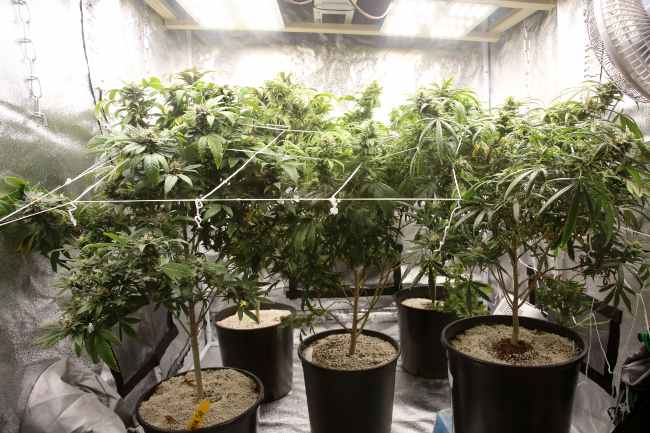
Thursday April 7, 2022
By Erin Hiatt
 Education
Education
Laws prohibiting cannabis consumption and possession across the U.S. continue to fall, but regulations remain patchwork from state-to-state and even city-to-city. Nowhere is that more evident than by what states allow recreational consumers and medical patients to grow their own weed.
For medical cannabis patients and their caregivers in particular, being able to grow their own marijuana provides tangible benefits. They can more easily control their supply, perform their own quality control, have access to medicine on a regular basis, and in the long run, may even save money.
However, what if your medicinal needs run up against your state’s cultivation limits? Let’s take a look at extended plant counts.
What Is an Extended Plant Count?
An extended plant count is part of the medical marijuana code where a patient or caregiver can grow an “extended plant count” if their medical marijuana-recommending physician determines that the patient has a medical necessity for more than what the state allows.
For example, in Colorado, medical marijuana patients or their caregivers are able to grow up to six plants, with three allowed to mature at any given time. If, however, a patient’s medical supply cannot be met by the six plant limit, they may petition to grow more plants if it is deemed medically necessary by their recommending physician, like the need to create tincture or edibles with more product versus smoking straight flower.

A patient will also need to provide additional medical information to support an extended plant count application, including surgical reports, medical history, x-rays, CT scans, lab work, hospital discharge summaries, etc.
It may be tempting to just grow more plants than the limit allows, but legal problems could ensue if you grow more than what is legal. In Colorado, growing more than 12 plants is a level one drug offense and can incur a $1,000 fine. Beyond the first offense, and if no more than 24 plants were grown, you could be sentenced to six to 18 months in the county jail and/or incur fines ranging from $500-5,000.
Being caught with more than 24 plants (with more than one cultivation offense) is a class 3 drug felony that could land you in Colorado State Prison for two-to-four years and/or fines from $2,000-500,000.
While other states allow for the home cultivation of cannabis primarily for medical cannabis patients, the allowed plant counts are all over the place — Missouri seems to be up at the upper limit with up to 18 plants permitted in a single housing unit. In Michigan, registered caregivers may grow up to 60 plants, and medical marijuana patients can harvest up to a 60-day supply, however many plants that is. In Washington, the number of plants that can be harvested by medical marijuana patients is 15.

It could be that Colorado’s extended plant count regulations have made other states shy about allowing personal cultivation without keeping those plant counts on a short leash. Prior to 2018, Colorado allowed for extended plant counts up to 99 plants. Additionally, patients could assign caregiver privileges to one another, which allowed individuals to grow additional plants on behalf of other patients.
However, the DEA (Drug Enforcement Administration) was not thrilled with a 99 plant count. A former special agent in charge for Colorado’s branch of the DEA told PBS that the agency believed that some with higher plant counts were diverting cannabis to non-legal states. “I think the 99 plant thing really opened the floodgates,” he said.
No other states [allowed] any numbers like that. Outside organizations took advantage of that…If you got ten people signed up, you effectively have 999 plants in a residence.
It goes without saying that the cannabis industry has changed a lot since 2018. More U.S. residents support legal weed than ever before. All the same, perhaps states are drawing the conclusion that the plant counts they have on the books suffice — and if they don’t, there are a lot of hoops to jump through to legally plant more.
Frequently Asked Questions
How Do You Qualify For Extended Plant Count in Colorado?
To qualify for an extended plant count, the patient has to work with their recommending physician who must deem an extended plant count medically necessary. Patients will also need to provide additional medical information. Then they have to apply for a permit to grow more.
Can I Grow 99 Plants in Colorado?
Nope. Adults 21 and older can grow up to six plants, with three flowering at any given time. Medical patients can be assigned higher amounts, but only with doctor's consent.
How Many Plants Can I Grow Legally in Colorado?
Adults 21 and older may grow up to six plants, with three flowering at any given time. Caregivers working with up to five patients may grow 36 plants.
How Many Plants Can Medical Patients Grow?
That depends on the state. Make sure to read this PotGuide article to see what’s legal in your place of residence.
Do you have an extended plant count? Let us know in the comments below!







